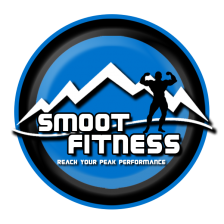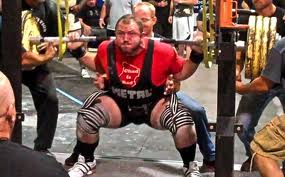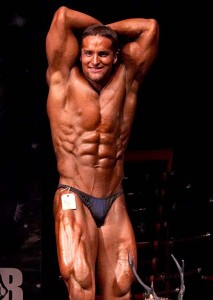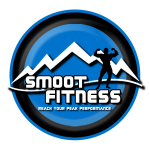My dad has a lot of tools.
I walked in to his garage the other day, and I swear it looked like the inside of a Lowe’s shopping center.
My first thought was “man, this is pretty cool.”
After all, to me – and most guys out there – power tools are pretty intriguing.
My second thought was “damn, if I ever need to use a tool for something, I have NO IDEA which one I’m going to pick.”
With so many tools at my disposal – whether I know some basic stuff like “a hammer is used to hit nails” or not – how do I know I’m picking the “right” tool for any one particular job?
Now, what’s funny about this (or, not funny I guess) is this is the exact response I had when I walked in to the weight room for the first time.
There were a million different exercises at my disposal, and although I knew what some of these exercises were – and how to perform them – I didn’t know what they were used FOR, WHEN to use them, or how, ultimately, to change them when I eventually reached a plateau.
But, I do now (or at least, I know a lot more than when I started), and I wanted to share what I’ve learned about exercise selection in this quick and easy-to-use article.
Originally, this was going to be a step-by-step guide on choosing exercises for your current – or future – training plans.
However, I decided against that because, well…I couldn’t figure out how I wanted to do it.
So, instead of a step-by-step guide on exercise selection, it’s just going to be a normal article.
I’m going to explain which exercises are best suited for each particular sport (powerlifting and bodybuilding), my rationale for choosing these exercises and how to implement them in to your current routine, and then – if I can think of something witty to say – I’m going to end with an epic conclusion.
First, Lets Cover Some Ground Rules
Before we discuss each particular sport, it’s important to highlight a few key principles that go in to proper program design – as it relates to exercise selection – that are the same regardless of the sport or physical activity you engage in.
- Compound exercises are placed first in a workout before isolation exercises.
- Strength – or “heavy” – work is placed first in a workout before hypertrophy/endurance – or “light” – work.
- The most technical lifts are placed first in a workout before the least technical lifts.
- The main lifts are programmed before accessory or supplemental lifts.
- Each training session contains 1-2 main lifts.
- Each training session contains 1-2 accessory lifts.
- Each training session contains 2-3 supplemental lifts.
- Main lifts are changed every 4-12 weeks (on average).
- Accessory lifts are changed every 4-12 weeks (on average).
- Supplemental lifts are changed every 2-8 weeks (on average).
- Accessory lifts can be used as main lifts and main lifts can be used as accessory lifts.
- If something is working, and you’re making progress…DON’T CHANGE IT.
Again, the 12 points above apply no matter which strength sport or physical activity you’re participating in, so refer back to this list as you move through the remainder of this article.
With that being said, it’s important to understand that these are just guidelines – not unwavering facts that can’t and shouldn’t be tampered with.
If you’re getting results utilizing the above guidelines to a “T” – which I assume you will – than great, don’t change anything.
But, if you’re not getting the results you want– and think you may have a better idea for how to implement certain exercises in to your current routine – DON’T HESITATE to experiment.
Sport #1 – Powerlifting
*photo credit: Chad Wesley Smith
I’m going to start with powerlifting because, well, it’s my favorite sport.
In powerlifting, everything revolves around the squat, the bench press, and the deadlift.
These are your main lifts.
These are the movements that – no matter what (unless you’re injured) – they’re ALWAYS in your current training plan (in some way, shape, or form).
Once your main lifts are established, emphasis switches to your accessory lifts, or the movements designed to BUILD the squat, the bench press, and the deadlift.
Ideally, you want to choose exercises that resemble the main lifts as much as possible.
For example, an accessory lift for the back squat would be a front squat or a pause squat.
An accessory lift for the bench press would be a close grip bench press or a floor press.
And an accessory lift for the deadlift would be a deficit deadlift or a Romanian deadlift.
Once you’ve gotten your accessory lifts in place, the only thing left is to figure out your supplemental lifts, or the lifts that are designed to bring up weak points/increase muscle mass.
Generally speaking, these include exercises for the upper back, abs, lats, shoulders, and arms, although, you can certainly add some extra work for your quads, hamstrings, glutes, pecs, etc. as you see fit.
Exercise List :
Main Lifts – Back Squat, Bench Press, Deadlift
Accessory Lifts –
Squat – Front Squat, Pause Squat, Safety Bar Squat, Box Squat (not as useful for raw lifters)
Bench – Close Grip Bench, Paused Bench, Overhead Press (OHP), Incline Press, Decline Press, Dumbell Bench, Incline Dumbell Bench, Decline Dumbell Bench, Floor Press
Deadlift – Sumo Deadlift (if you pull conventional), Conventional Deadlift (if you pull sumo), Deficit Deadlift, Trap Bar Deadlift, Block Pulls, Rack Pulls, Romanian Deadlifts, Good Mornings
Supplemental Lifts –
Upper Back – Barbell Rows, Reverse Grip Barbell Rows, T-Bar Rows, Cable Rows, Hammer Strength Rows, Dumbell Rows, Kroc Rows, Meadows Rows
Lats – Pull-Ups, Chin-Ups, Neutral Grip Chin-Ups, Wide Grip Lat Pulldown, Close Grip Lat Pulldown, Inverted Rows
Abs – Deadbugs (all variations), Planks (all variations), Farmer’s Carries (all variations), Reverse Crunches, Hollow Body Holds, Hanging Leg Raises, Weighted Decline Crunches, Cable Palof Press
Shoulders – OHP, Seated Shoulder Press, Arnold Presses, Reverse Grip Lateral Raises, Lateral Raises, Cable Face Pulls, Landmine Presses
Arms – Barbell Curls, Dumbell Curls, Incline Dumbell Curls, Preacher Curls, Concentration Curls, Machine Curls, Cable Curls, Skullcrushers, Single-Arm Tricep Extension, Dumbell Tricep Kickback, Rope Tricep Pressdown, Machine Tricep Pressdown
Sport #2 – Bodybuilding
*photo credit: Layne Norton
When it comes to bodybuilding, you really have any and all exercises at your disposal.
There isn’t a WHOLE lot of difference between bodybuilding-style training and powerlifting-style training (powerlifters train like bodybuilders and bodybuilders train like powerlifters – just to varying degrees – whether they like to admit or not), so you can approach exercise selection for bodybuilding similar to the way you approach exercise selection for powerlifting.
However, although powerlifting and bodybuilding are similar, they do still have SOME differences, and the biggest things to keep in mind when choosing exercises for your bodybuilding routine are as follows:
- Bodybuilding DOESN’T revolve around the squat, the bench press, or the deadlift. As such – and although it’d still be a good idea to keep them in as they’re some of the best exercises for improving strength, size, and power– you don’t HAVE to keep the squat, the bench, or the deadlift (or variations of each) in for each training cycle (you don’t have to use them at all).
- Because there aren’t any competition lifts, the main criteria for choosing exercises are 1.) They’re ability to build muscle mass (anything that provides an external resistance builds muscle mass), and 2.) They’re ability to NOT cause pain or injury.
- Isolation exercises (flys, leg extensions, leg curls, lateral raises, etc.) isolate a muscle (ha, big shocker there) in a way that compound exercises can’t. Therefore, they’re just as good at building muscle as major, compound exercises and should make up a decent proportion of your overall training plan.
^^ The above is not meant to say that isolation exercises are “equal” to compound exercises. Compound exercises – on top of building muscle mass – increase strength, speed, athleticism, and lead to a much greater hormonal response. Compound exercises are better OVERALL; isolation exercises just match their muscle building capacity.
Again, bodybuilding and powerlifting are fairly similar, and shouldn’t be approached as two completely separate entities (both work to enhance the other).
However, there are still some differences between the two, so make sure you keep those differences in mind when you go to design your next training plan.
Exercise List:
– Anything that utilizes BARBELLS, DUMBELLS, CABLES, MACHINES, or YOUR BODYWEIGHT.
– Set the foundation as something similar to that of a powerlifter, and build on it from there.
Alright Cool…So What Do I Do When I Hit a Plateau?
Simply put – you switch exercises.
Like I mentioned in the “guidelines” section of this article, I like to switch main lifts every 4-12 weeks (generally around 12), accessory lifts every 4-12 weeks, and supplemental lifts every 2-8 weeks.
The reasoning behind this is three-fold:
- It reduces boredom.
- It decreases the risk of overuse injuries.
- It allows you to tackle weak points that may be limiting your performance.
Of course, you don’t HAVE to switch exercises every time you hit a plateau.
You could also change your workload (volume, intensity, and frequency) and/or progression scheme.
But, for the purposes of this article – and because I don’t have enough space here to go over other programming variables – just realize that changing exercises once you hit a plateau is a great way to re-stimulate progress.
The time frames I’ve recommended?
They’re pretty standard, and where most of my exercise selection changes line up.
However, the biggest determinant of whether or not I change an exercise is simply whether or not I’m still making progress.
If I am, I leave everything alone (doesn’t matter if I’ve used the same lift for the past 6 weeks or the past 6 months).
If I’m not making progress, I switch to something else.
Wrapping Up
A lot of people make exercise selection much more complicated than it needs to be.
Choose some exercises (strategically of course), and start trying to progress them from one workout to the next.
Then, once you stop making progress, switch exercises, and start trying to progress THOSE from one workout to the next.
It really is that simple.
Do what works until it stops working.
Then, figure out something else that works, and start doing that.
Want to Build Crazy Amounts of Strength?
Signup below to receive my [FREE] strength training manuel delivered in the next 60 seconds.





Leave a Reply